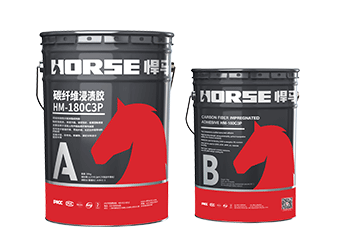Solutions
Horse Construction offers full range of structural strengthening materials with technical supports, documentation supports, products supports, project supports.
Carbon fiber reinforcement has the advantages of high strength, good effect, and can greatly improve the corrosion resistance and durability of the structure, light weight, good flexibility, easy cutting, wide application range, convenient construction, easy operation and so on.
1. general situation
In 2005, due to the need of increasing production and expanding capacity, our company expanded the original steam turbine plant, and added a 12 000 kW turbogenerator set. Large reinforced concrete frame structure is adopted in the foundation of turbogenerator unit. The base elevation is - 31200 mm, the top elevation is 71120 mm, and the concrete strength grade is C30. After the foundation construction is completed, 10 150 mm anchor bolt holes of the arriving equipment are dislocated 215 mm from the reserved holes of the unit and the depth of the reserved holes is 1 120 mm, which does not meet the installation requirements, so the holes need to be relocated. However, the reinforcing steel bar on the beam will be cut off by re-opening, which will cause damage to the local foundation. In order to ensure the safe operation of the turbogenerator, reinforcement measures should be taken to the defective part of the foundation structure. Through the analysis and comparison of the company's design, infrastructure, construction units and relevant experts, it is decided to choose CFRP to reinforce the foundation, that is, CFRP is used to reinforce the local defects of the foundation without affecting the construction period and the main foundation, so as to meet the requirements of installation strength.
2 carbon fiber reinforced concrete structure principle, technical characteristics and material characteristics of this project.
Carbon fiber materials are made of epoxy resin bonded high tensile strength carbon fiber bundles. In other words, carbon fiber is bonded to the surface of structure or component by resin materials to form composite CFRP. Through the synergistic effect of CFRP and structure or component, the bearing capacity of structure or component (bending and shearing resistance) is increased, and the purpose of strengthening structure or component and improving the mechanical performance is achieved.
The carbon fiber materials used for reinforcing and repairing concrete structures mainly include 2 kinds of carbon fiber and matching resin. The tensile strength of carbon fiber is ten times that of construction steel, and the elastic modulus is equivalent to that of steel. However, carbon fibers alone are difficult to play their role, because it is difficult to work together after weaving into carbon fiber cloth. When the load is low, some carbon fibers with higher stress level reach their tensile strength first, and then withdraw from the working state, and so on, until the overall failure. Matching resins play a key role in strengthening carbon fiber sheets, including the underlying resin, leveling resin and bonding resin. The former two functions are to improve the bonding quality of carbon fiber, the latter is to make carbon fiber and concrete form a composite whole, and work together to improve the flexural and shear bearing capacity of members, to achieve the purpose of strengthening the members.
3 reinforcement design
311 basic assumptions
The ultimate bearing capacity of concrete beams strengthened with CFRP is different from that of ordinary concrete beams. The basic assumptions are as follows: (1) the effect of concrete in tension zone is neglected; (2) the concrete, steel bar and CFRP should conform to the plane section assumption after bending; (3) the CFRP is linear elastic strain relationship. The equipment foundation of this project is not put into use after completion, so the influence of carbon fiber secondary force is neglected in reinforcement design.
312 carbon fiber cloth reinforcement design
According to the requirement of carbon fiber reinforced polymer (CFRP) reinforcement for component concrete labeling (concrete labeling is not less than C15), the foundation concrete is checked first. According to the design drawings, the design strength of concrete is C30, which is tested by rebound tester. The actual strength of concrete is C30, which meets the reinforcement requirements.
Due to the reserved hole position offset 215 mm, it is necessary to re-locate the hole on the beam. After re-drilling, the local compression of the beam will be weakened. The cross-sectional area of the reinforced beam is 700 mm 6550
In order to strengthen the anchorage of CFRP at the bottom of the beam and increase the shear resistance of the beam, four U-shaped stirrups with 100 mm width are pasted on each side of the beam end.
4. Summary
Carbon fiber reinforcement has the advantages of high strength, good effect, and can greatly improve the corrosion resistance and durability of the structure, light weight, good flexibility, easy cutting, wide application range, convenient construction, easy operation and so on.
You can find anything here you are in need of, have a trust trying on these products, you will find the big difference after that.

High strength, unidirectional carbon fiber wrap pre-saturated to form a carbon fiber reinforced polymer (CFRP) wrap used to strengthen structural concrete elements.

Good impregnation carbon fiber adhesive for applying carbon fiber reinforced polymer(CFRP) wrap for structural strengthening

High strength carbon fiber reinforced polymer (CFRP) strip / laminate / plate for structural strengthening and concrete repair